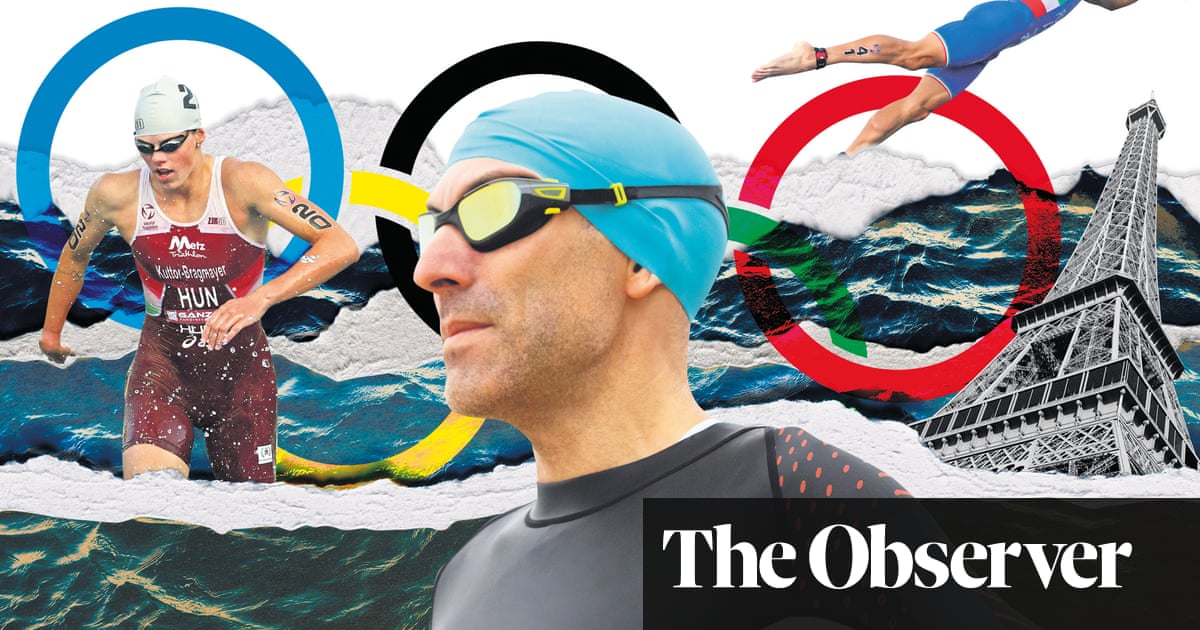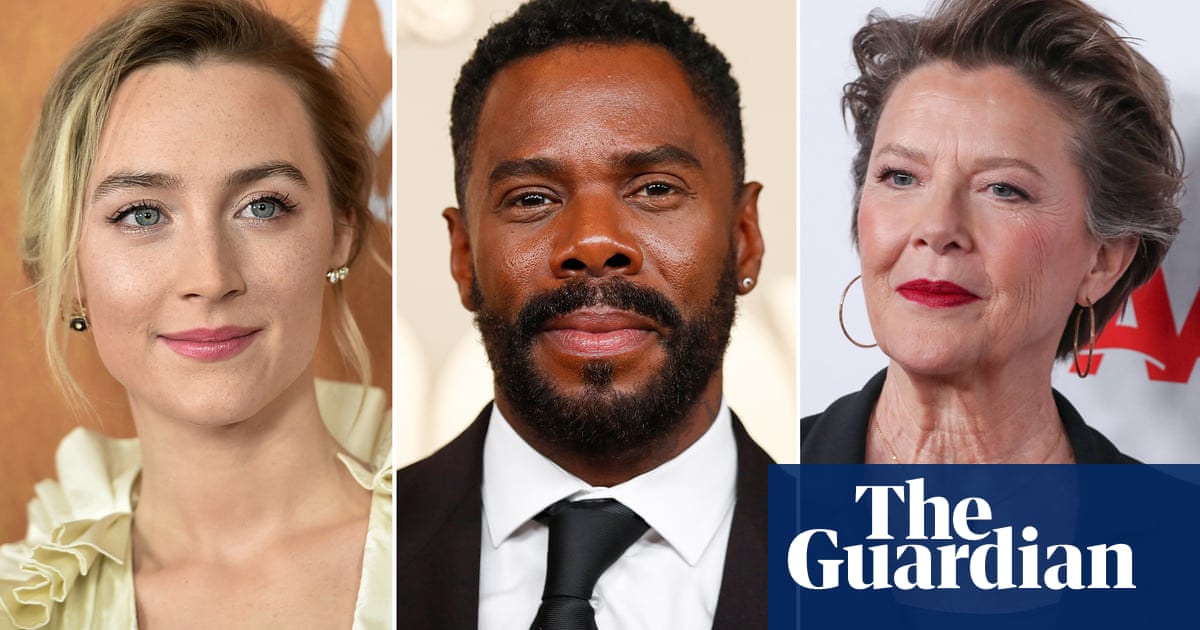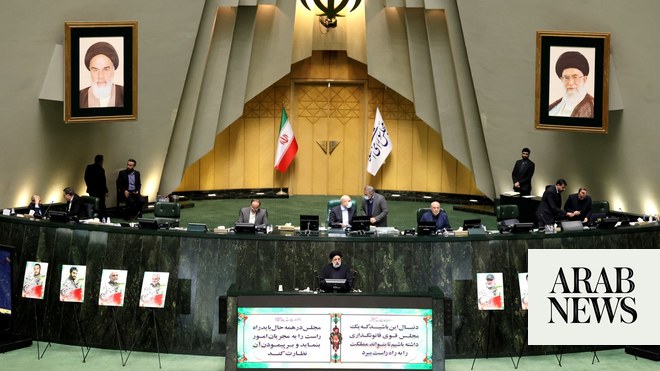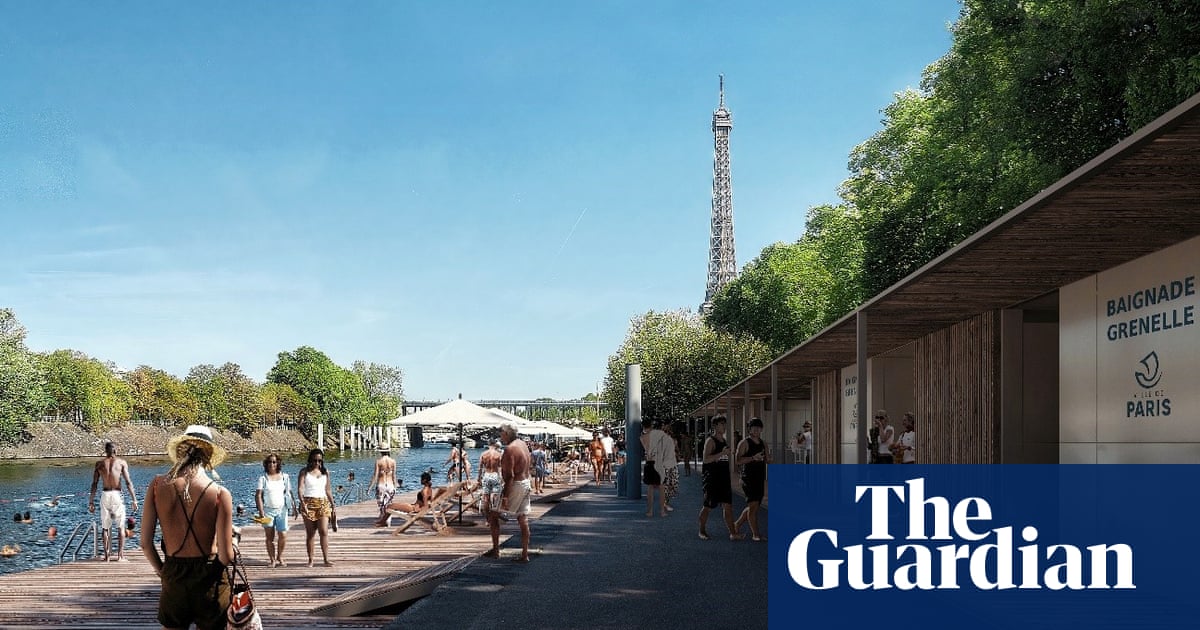
Riders of Paris’s No 7 Métro line have long enjoyed a scenic view as the track passes near Austerlitz station, set between the beautifully manicured Jardin des Plantes to one side, and the River Seine on the other. Recently, however, that view has been punctured by a circular behemoth: the Austerlitz storage basin – the size of 20 Olympic pools – built to save next summer’s Games.
With a series of Paris 2024 competitions – and the opening ceremony – slated to take place in a river that has not allowed public swimming for a century, and heavy rains this summer scuppering multiple trial events due to excess bacteria in the water, the Seine remaining unsafe come the start of the Olympics in July is an ever-growing threat.
Yet the cavernous Austerlitz basin – a building site fringed by diggers and cranes – currently appears as the rest of the city’s Seine clean-up plans: incomplete. The goal is to have what is essentially a giant rainwater holding tank, measuring 50m wide and 34m deep, capable of storing up to 46m litres ready by spring. Once the rainwater is collected there, it will be transported via a tunnel beneath Austerlitz train station and the 350-year-old Pitié-Salpêtrière University hospital beside it, beneath the river, to a downstream treatment plant. When levels of Escherichia coli and intestinal enterococci meet the safety thresholds, it will be passed back into the Seine.
This €1.4bn construct is now the great hope, organisers tell me, for the Games, the city, and beyond; a vital step in preventing further pollution of the 777km (482-mile) waterway (the Seine sits at the confluence of the Marne and Oise rivers). Prior to the city’s winning bid, there had long been concerns about how Paris’s largely 19th-century sewer system could prevent urban runoff, where bad weather washes pollutants such as rubbish, pesticides and sediment into the water. But nobody foresaw the worst rains in 65 years hitting the city this July, forcing the cancellation of the Olympic triathlon and paratriathlon test events, and the Open Water Swimming World Cup.
This has been “an exceptional summer”, says Pierre Rabadan, Paris’s deputy mayor. While he is aware that “unexpected challenges” could strike again ahead of the opening ceremony on 26 July, organisers insist there is no plan B in place, nor will there be. Should another bout of heavy rain hit, forcing urban runoff-induced bacteria to rise above safe levels, “We can try to push the dates of competition one or two days to be able to bring back good quality of water,” Rabadan suggests – though, given the practicalities of shifting entire Olympic events, this may seem optimistic.
Political promises
There is a simple solution: to forget the river altogether, and use one of the city’s many pools instead. But as well as it being an integral part of Parisian history immortalised in paintings and literature – Ernest Hemingway once wrote that “I could never be lonely along the river” – making the Seine swimmable again has become a multibillion-euro promise too big to renege upon.
It was a fundamental part of the city’s Olympic bid (for the opening ceremony, flotillas will set off on a 6km journey down the river), and of the election campaign of the city’s mayor, Anne Hidalgo (who pledged that a string of swimming spots along the Seine would open in the year after the Games). Hers was the latest in a line of political promises dating back to Jacques Chirac, the former prime minister, who, in 1990, declared that, by 1993: “I will swim in the Seine in front of witnesses to prove [it] is a clean river.”
That next summer’s Games are a century on from the last time Paris hosted the Olympics has further raised the stakes, with Rabadan promising that they will be “an accelerator for … transformation and improvement”. They also promise major financial rewards: one study estimated that the Games could generate €10.7bn in economic benefits for France. At Paris’s inaugural hosting of the Games in 1900, seven events were held on the Seine.
The biggest clean-up issue is wastewater – domestic and industrial – with 1.9m cubic metres discharged into the Seine in 2022. While this is 90% less than 20 years ago, it is still too much. Wastewater (both legal and illegal) is dumped to avoid saturating the sewage system and potentially causing it to flood, particularly when heavy rain hits.
Efforts are also under way to reconnect pipes in more than 20,000 homes to newer sewer networks under Paris – though the offer of a €6,000 grant per household yielded take-up of only around a quarter of eligible residents by March last year. These residences are still believed to be dumping wastewater directly into the river.
Until recently, boats moored within the city limits did the same, though after a council mandate in 2018 they, too, must connect to the sewer system (an estimated half have complied).
“It is a very big challenge,” Prof Jean-Marie Mouchel, a hydrologist at the Sorbonne, says of the work ahead, though he stresses it is needed. Still, the period to enact this vision “is very short. The timescale for building new sewers, of modifying wastewater treatment plants normally is about 10 years. And the challenge was to make it in only five.”
Embracing nature
As temperatures rise (2023 is set to be the hottest year globally on record) along with population density in cities, making urban waters swimmable is an ever more important goal. Rivers can provide essential relief, especially during summers, with city-dwellers hit far harder than rural counterparts, as paved surfaces and narrow streets absorb and trap heat.
A study published in Lancet Planet Health earlier this year found that people in Paris are far more likely to die from extreme heat than those in 853 comparable European cities. In recent years, the likes of Zurich and Munich have successfully cleaned up their rivers, with Berlin and Amsterdam among those next in line – yet none matches Paris for the length of its river and the density of inhabitants.
“I think many cities are looking at what is going on. What are these crazy French people trying to do?” Mouchel jokes.
Dan Angelescu, CEO of Fluidion, a water-monitoring company based in Paris and Los Angeles, describes the city as “pioneering a global trend, and the Olympics, definitely, are a high-visibility opportunity to make a statement”. There is “a lot of citizen pressure to have access to quality urban waters”, he adds, and bacterial monitoring sensors are part of the solution. “We believe that the cities of the future will need to embrace nature in order to thrive, and will also need to embrace digital sensor technologies to be able to monitor fragile urban ecosystems and the safety of different water uses. No one wants to live in a gloomy city where the river is used exclusively as an urban sewage conduit or as a shipping route.”
Wildlife would also benefit from a cleaner Seine. Mouchel notes that “in the 70s, there were only three fish species living in [the river]; now there are more than 30”. But a 2020 paper by researchers at Université Paris-Saclay and the Sorbonne highlights that this would bring it to only around the same level as that of many centuries earlier.
“Before human intervention, the Seine River hosted 11 diadromous and at least 22 freshwater fish species … the fish community has changed since the medieval period due to overfishing, pollution, habitat destruction and the disruption of migration routes.” Effective action is required, they add, “to strengthen the recovery and sustainability of migratory fish populations in the Seine”.
Some Parisians are yet to be convinced, however: a 2021 poll found that 70% described the river in negative terms, with the smell and pollution ranking among the chief offences. Arnaud Montand, a boat captain who has lived on the Seine since 1998, says: “I find it funny – this idea to want to give back the river to the Parisians and the swimmers. I think there are better places for that.”
He is concerned about the knock-on effect on the city’s booming boat tour industry, which will have to cease in areas where new post-Olympic swimming spots are created. Over time, he concedes that “the boats [have become] bigger and bigger” – but “I don’t think the boats are the cause of pollution inside the Seine. Humans near rivers are the cause.” On a Sunday morning, he says: “You will see the leftovers from Saturday night, and plenty of it is in the water. It is not the boats creating all this garbage – it’s the people.”
Along with small-scale detritus, every year, 360 tonnes of waste is pulled from the Seine, including old scooters, safes, motorbikes and TV sets. These objects are the modern replacement for its earliest forms of trash: human bodies, tossed into the water during wars between Catholics and Protestants in the 16th century.
As with so much of what happens in Paris, London can relate to this. At least 200 tonnes of waste is hauled out of the Thames annually: swimming in the tidal Thames is “not an activity which the Port of London Authority encourages”, and is permitted only from Teddington as far downriver as Putney Bridge.
The UK is regularly ranked among the worst countries in Europe for river cleanliness, with more than 389,000 discharges of untreated sewage (amounting to 2.4m hours of pollution) in 2022. And swimmers have suffered in UK waters this summer. At least 57 fell ill after the World Triathlon Champion Series at Sunderland’s Roker beach in August, where, three days before the event, readings for E coli colonies were 39 times higher than the month before. In September, Swim Serpentine (held at the Serpentine lake in Hyde Park, London) was nearly cancelled after blue-green algae, which can cause vomiting, nausea and allergic reactions, bloomed in the water.
If Paris does pull off cleaning up the Seine, the work may become a blueprint for urban metropolises worldwide. As the deadline approaches, though, those involved are under no illusion about the scale of the task. “We still have to address the question of runoff,” Mouchel says. “And to pray.”












